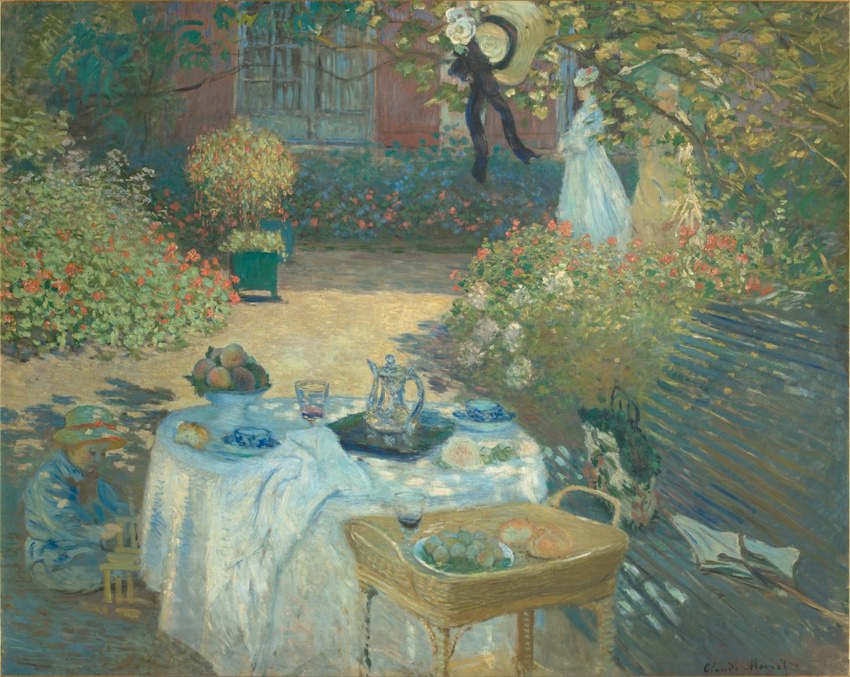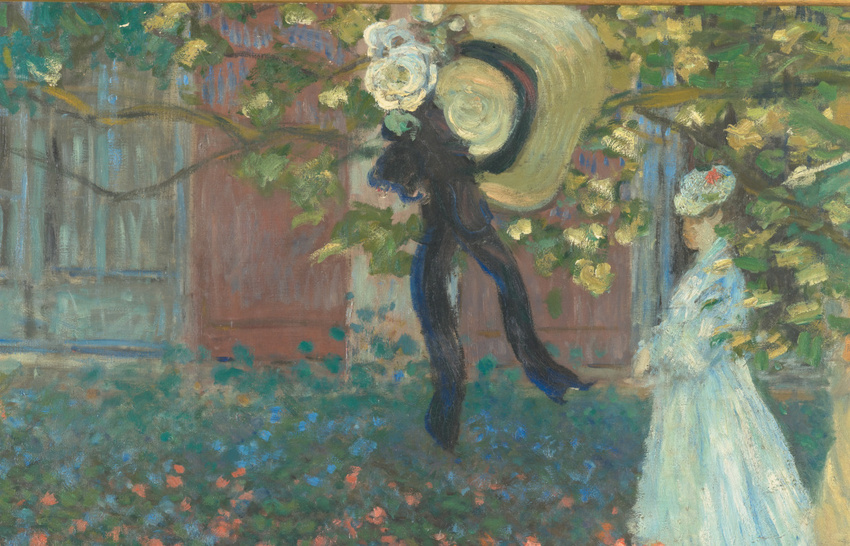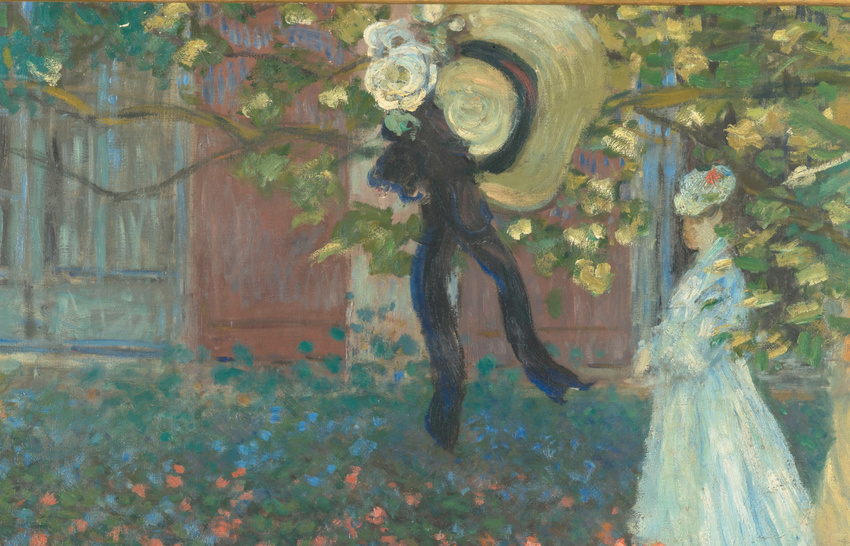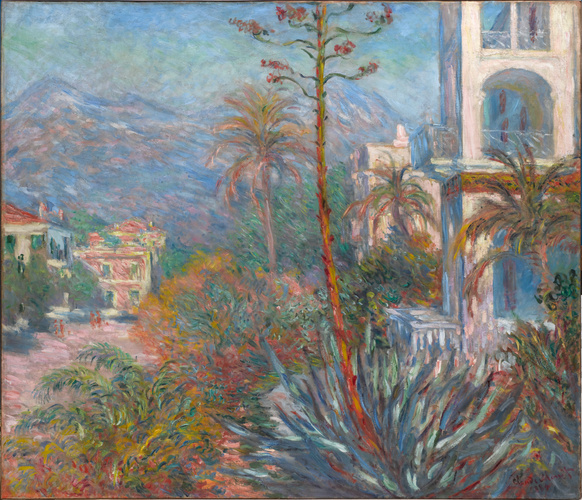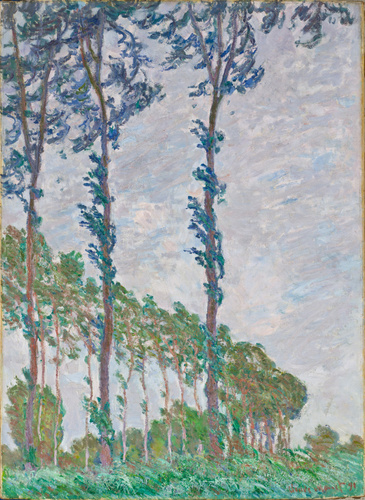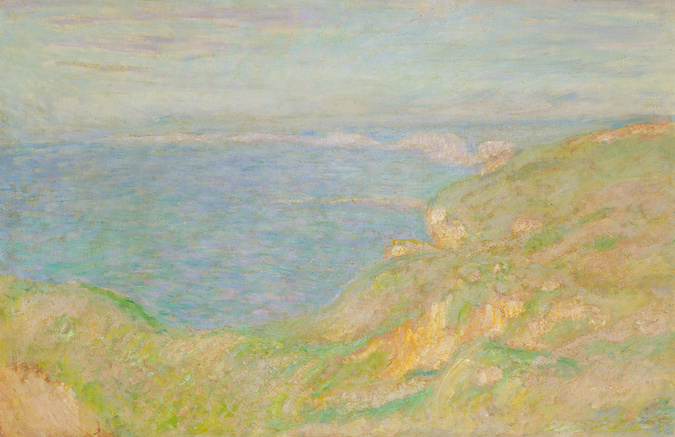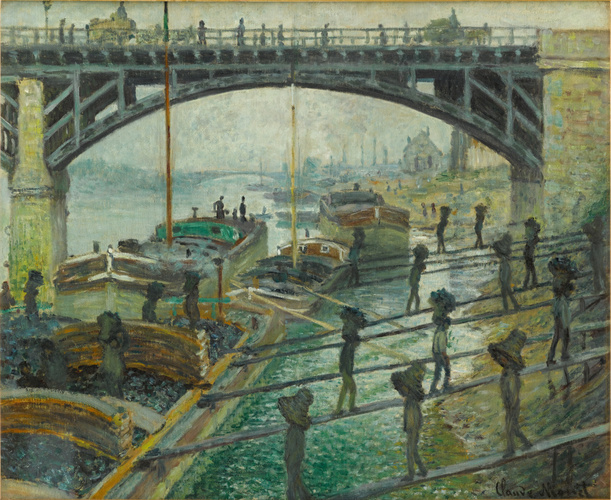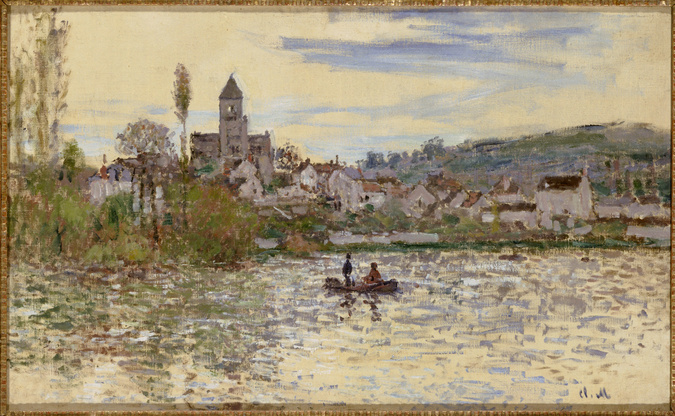Le Déjeuner : panneau décoratif
After 1870, Monet gave up the large-scale paintings of his early days. However there were some exceptions: these are The Lunch exhibited in the second Impressionist exhibition of 1876 as a "decorative panel" and the paintings he produced in 1876-1877 for Ernest Hoschedé as decorations for the château de Rottenbourg in Montgeron. Possibly it was this Lunch, seen in Monet's studio or at the 1876 exhibition, which prompted Hoschedé to commission the panels for his own estate.
The charm of the subject lies above all in the impression of spontaneity, in the simple evocation of a family life, some traces of which remain. The table has not been cleared at the end of a meal. A hat, hanging on the branch of a tree, a bag and a parasol left on the bench seem to have been forgotten there. In the cool shade of the green foliage, little Jean Monet quietly plays with a few pieces of wood.
As in other paintings, Monet here seems to come close to Vuillard and Bonnard who would treat these same subjects a few years later. The "close up" of the top half of the wicker tea trolley, contrasting with the female figure in the background on the right, also recalls certain techniques favoured by the Nabis.
